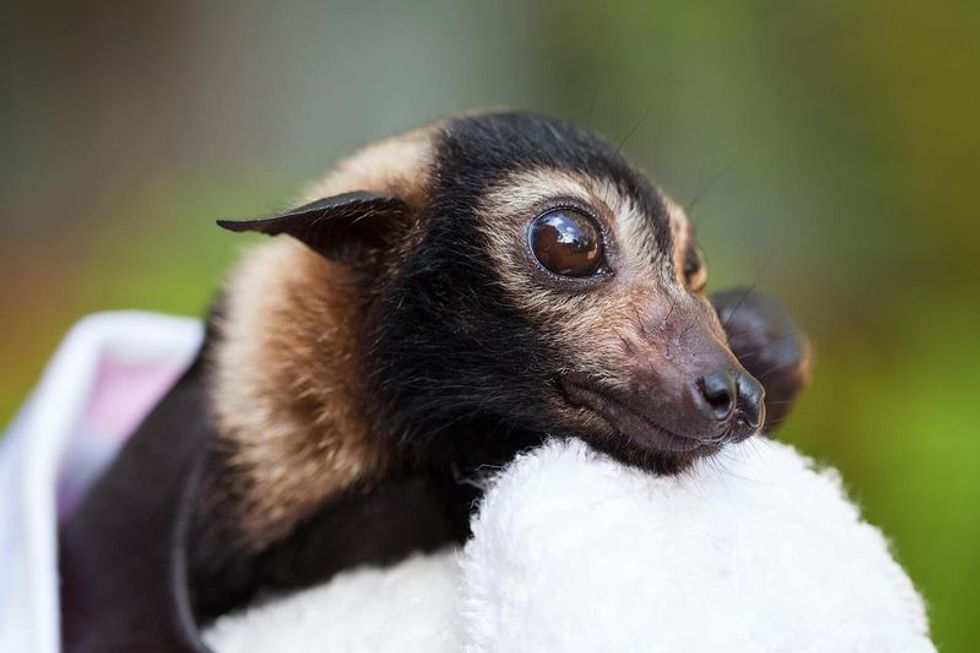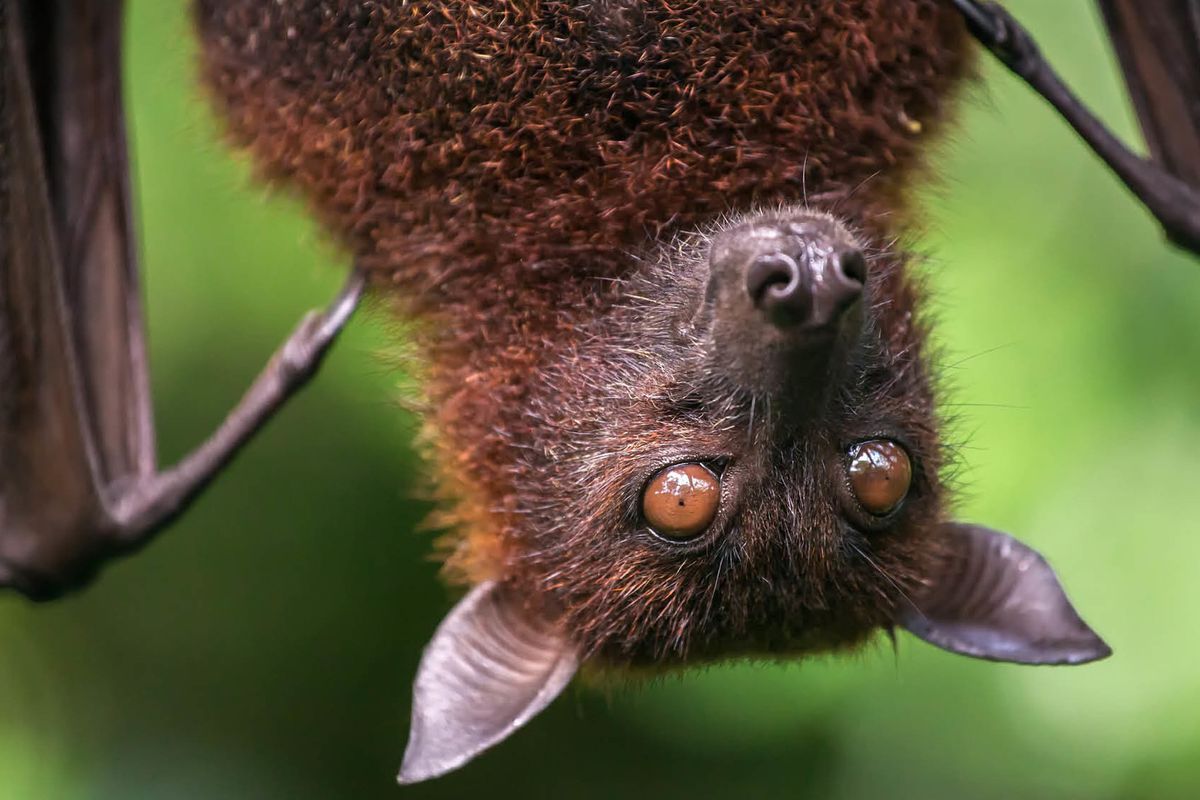Did you know the Bay Area is home to more than 16 species of bats? That makes our slice of Northern California one of the most diverse areas in the country for bat watching.
In recent years, bats around the world have been afflicted by white-nose syndrome (WNS), an epidermal fungus that attacks hibernating bats and can spread across their skin, leaving holes in their wings and eventually causing incapacitation and often death. Since 2011, an estimated six million bats have died from the disease, but so far Californian bats have largely been spared. Bay Area zoological intuitions including the Oakland and San Francisco zoos are doing their part to ensure these flying mammals stick around for generations to come. The SF Zoo is partnered with Bat Conservation International to foster innovative programs that combine research, education, and direct conservation to ensure that our bats will continue to help maintain healthy environments. The Oakland Zoo, meanwhile, has joined forces with the nonprofit Lubee Bat Conservancy, an international organization working to save fruit and nectar bats, two species of which can be seen up close at the Oakland Zoo.Though spotting bats in the wild can be tricky, there are a few places where you watch them take fight around sunset in SF and throughout the Bay Area.

Lake Merced, San Francisco
Bats love water. Well, rather, they love the insects that swarm above water, especially when there's good lighting to attract bugs. For the best bat-watching opportunities at Lake Merced, park along Morningside or Gellert Drive and, from there, follow the trail south for about a mile toward Lake Merced Park. Time your viewing accordingly and make your way to the water's edge around dusk (5:25pm-ish), and look up for spooky Halloween feels. // Skyline Blvd. and Harding Rd., sfrecpark.com
Fun Fact: Swarming bats are welcome in many parts of the rural south and west for their ability to wipe out airborne pests such as mosquitoes and horse-flies.
Golden Gate Park, San Francisco
GGP is a gold mine for bat watching. Between the snaking trails and the wind-hissed verdure, bats of many shapes and sizes can be found here. Where and when? Stow Lake Boathouse, before 6pm. Unlike Lake Merced, you won't have to walk far; there's ample parking just across the street. // 50 Stow Lake Dr. East (Golden Gate Park), stowlakeboathouse.com
Fun Fact: Bats are the only truly winged mammals in the world. "Flying" squirrels and sugar gliders have what's called a patagium, a loose-fitting flap of skin—not a wing—between their limbs that allows them to glide from place to place.

Olompali State Historic Park, Novato
This state park in Marin has long been heralded as a bat-watcher's paradise; at least five resident and migratory species can be seen weaving through the treetops. From Highway 101, take the San Marin Drive exit, then follow the signs north to the Old Redwood Highway frontage road that leads to the park. Because the bats are known to be so prolific in the area, you won't have to hike far to see any. Please note that, since parking is limited, it is advisable to hike or bike to the park. // parks.cal.gov
Fun Fact: NorCal Bats is the Bay Area's leading bat rehabilitation center, taking in bats that have been abandoned, injured, or misplaced by development.

Oakland Zoo, Oakland
Home to two of the largest species of bats on the planet—Island and Malayan flying foxes (fruit bats)—the Oakland Zoo is one of the few places in the United States where you can see these bats up close—they're active even during the day, so you can expect to see them gliding around their netted enclosure on your visit. If you're lucky, you'll see them snuggling up to teddy bears, too. But like many of us, temperatures below 75 degrees seem to make them retreat into their roosting area. // 9777 Golf Links Rd. (Oakland), oaklandzoo.org
Fun Fact: Bats make up more than a quarter of a million of the world's mammal species. Of those, 160 are fruit bats, with 60 of those named "flying foxes" for their fox-like faces.





















